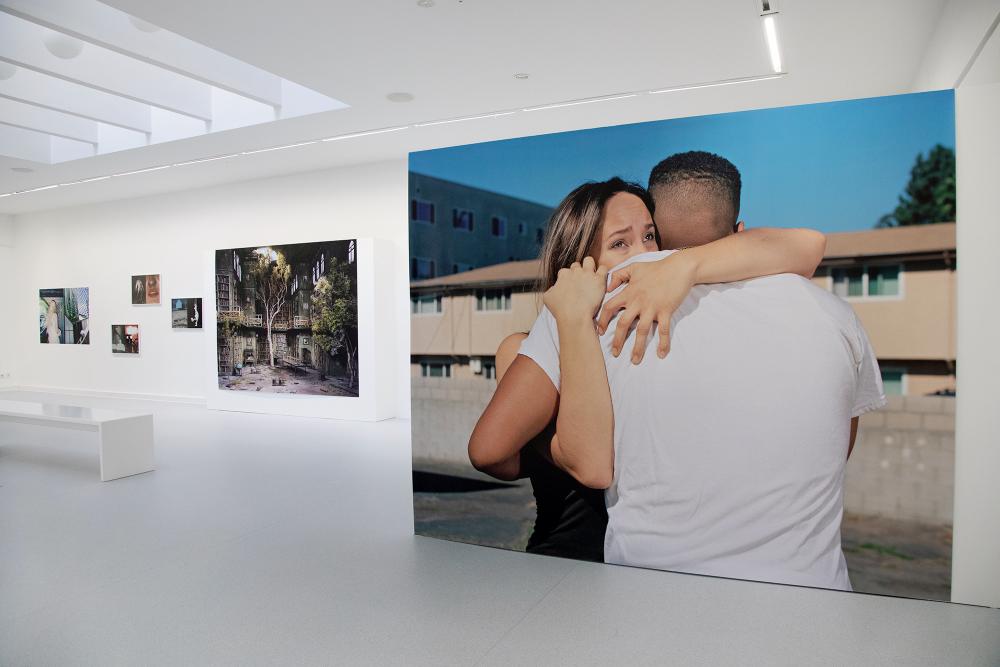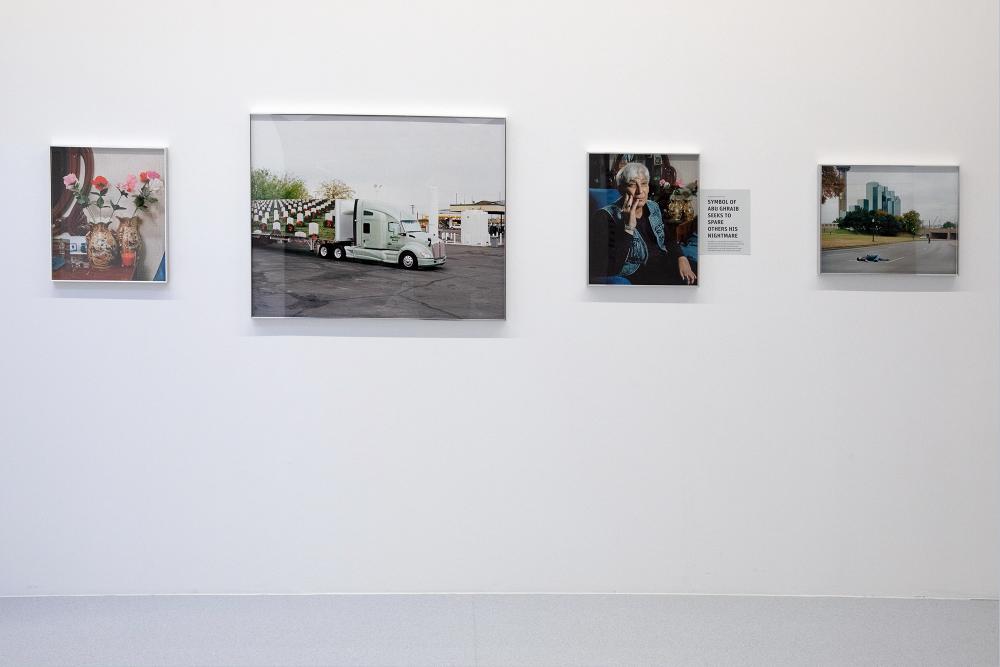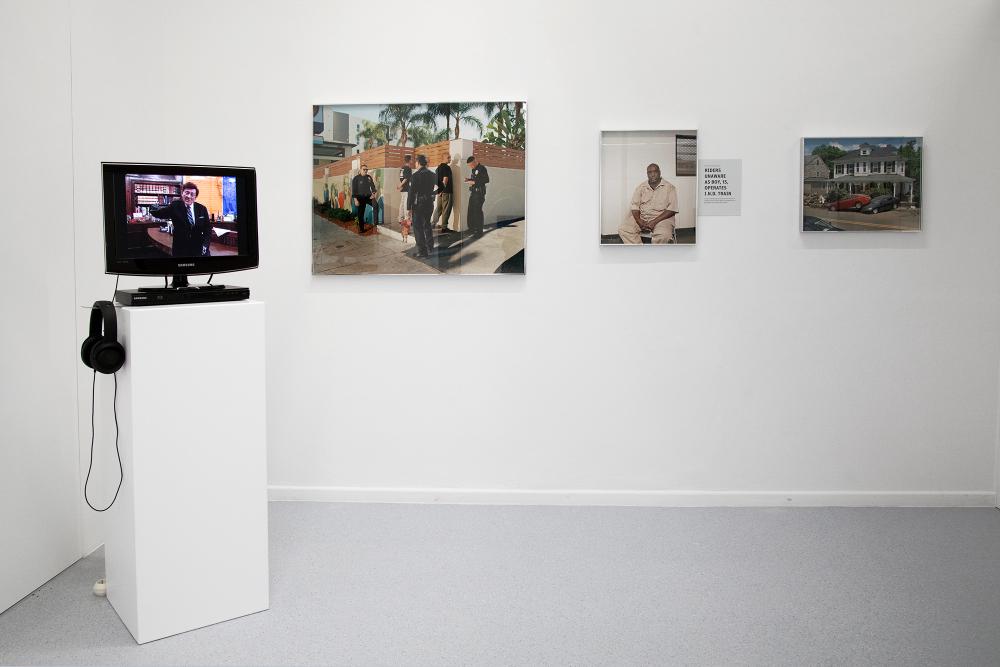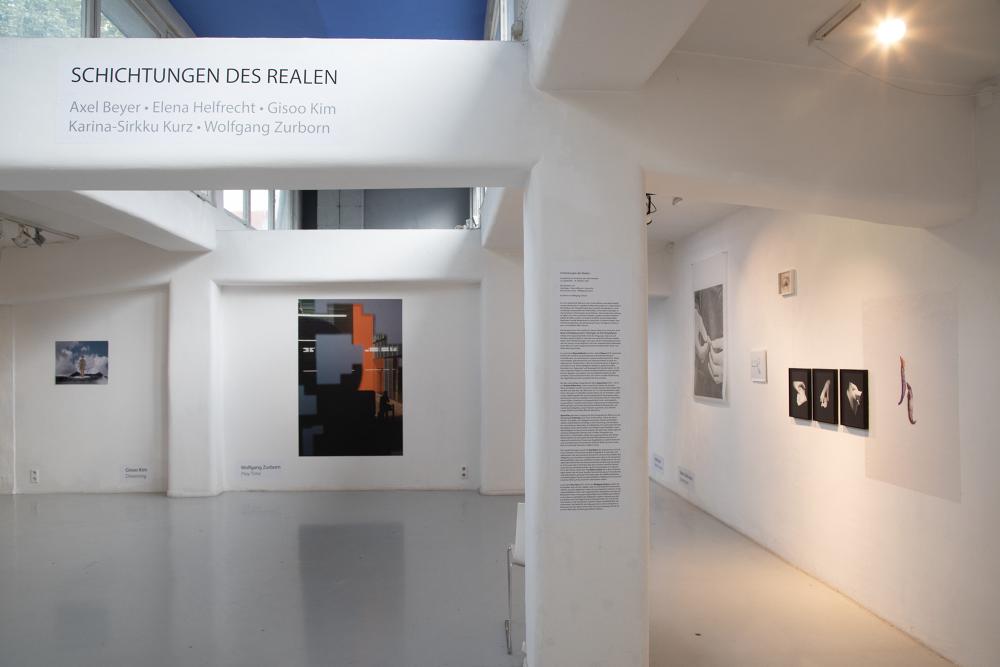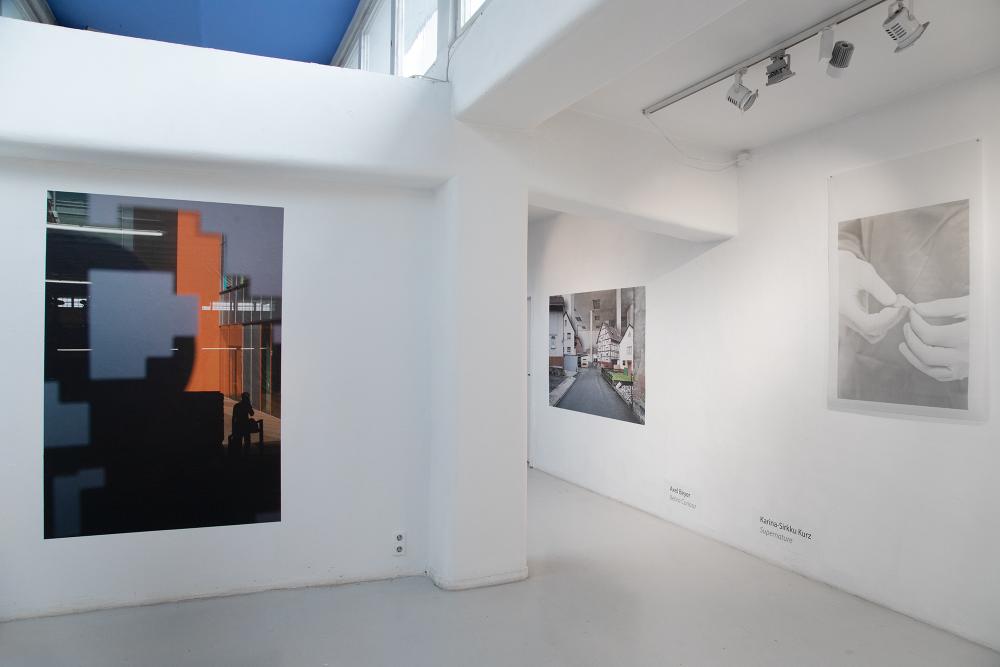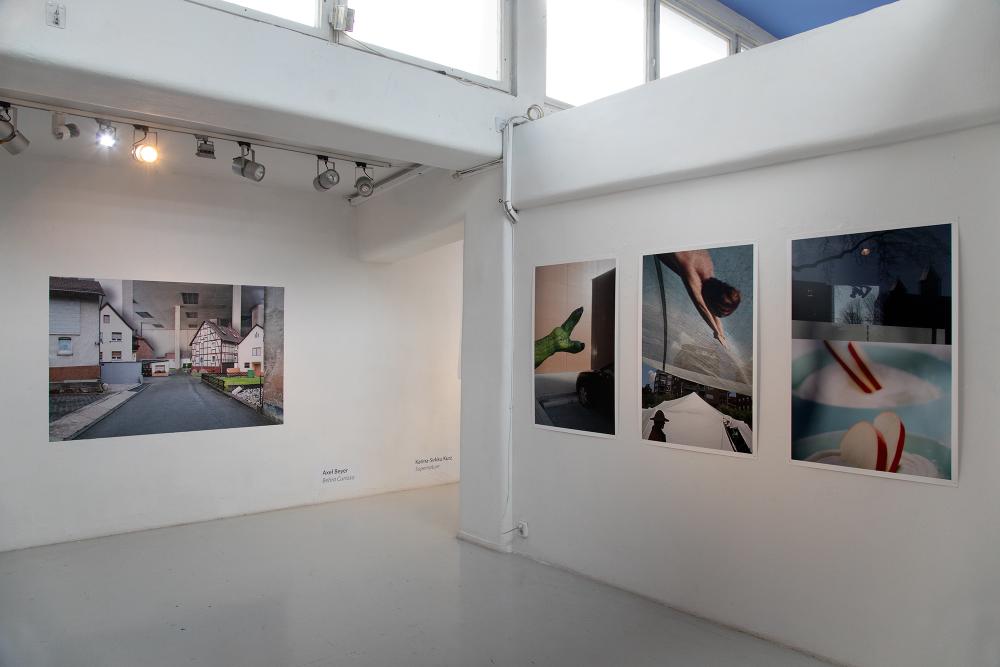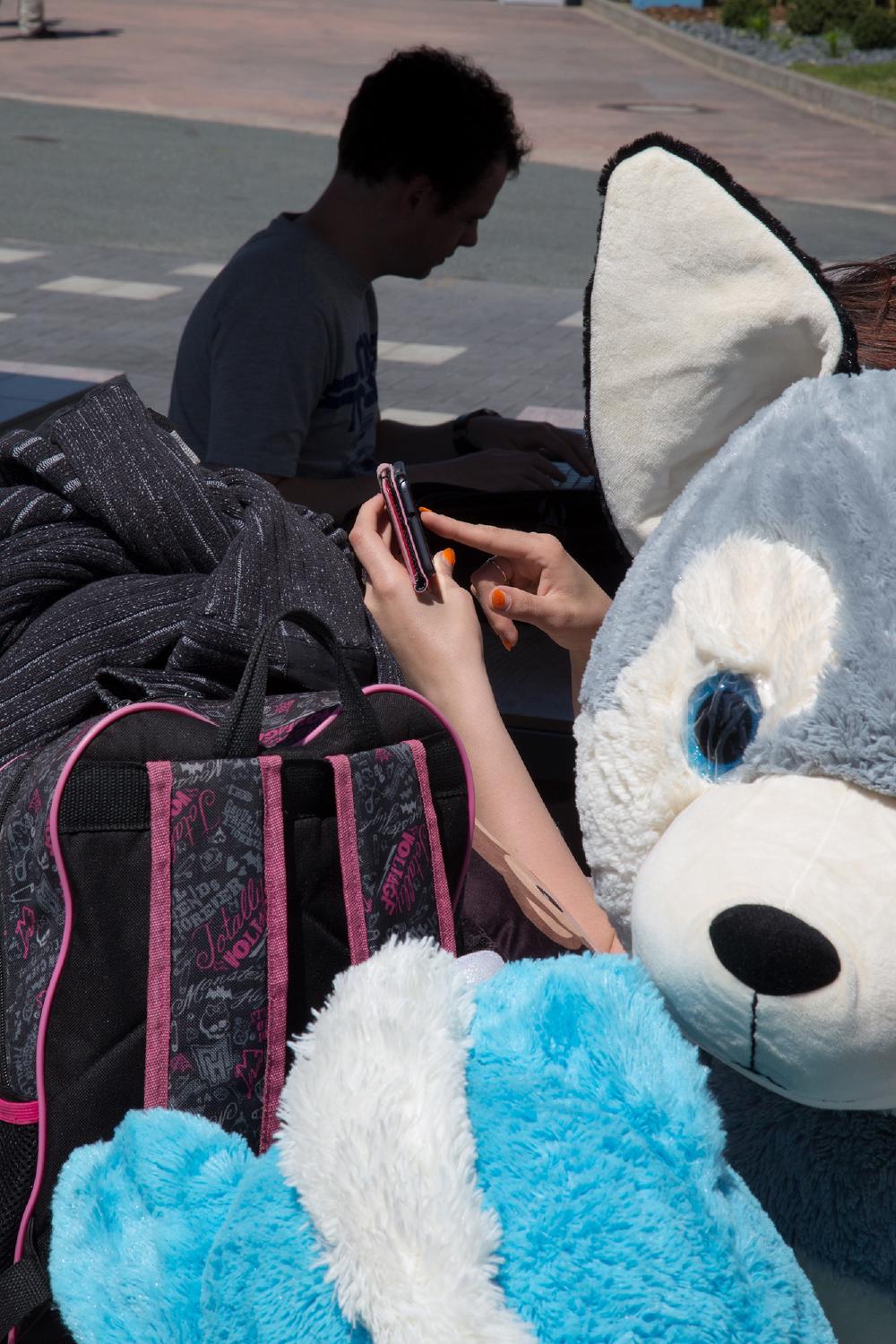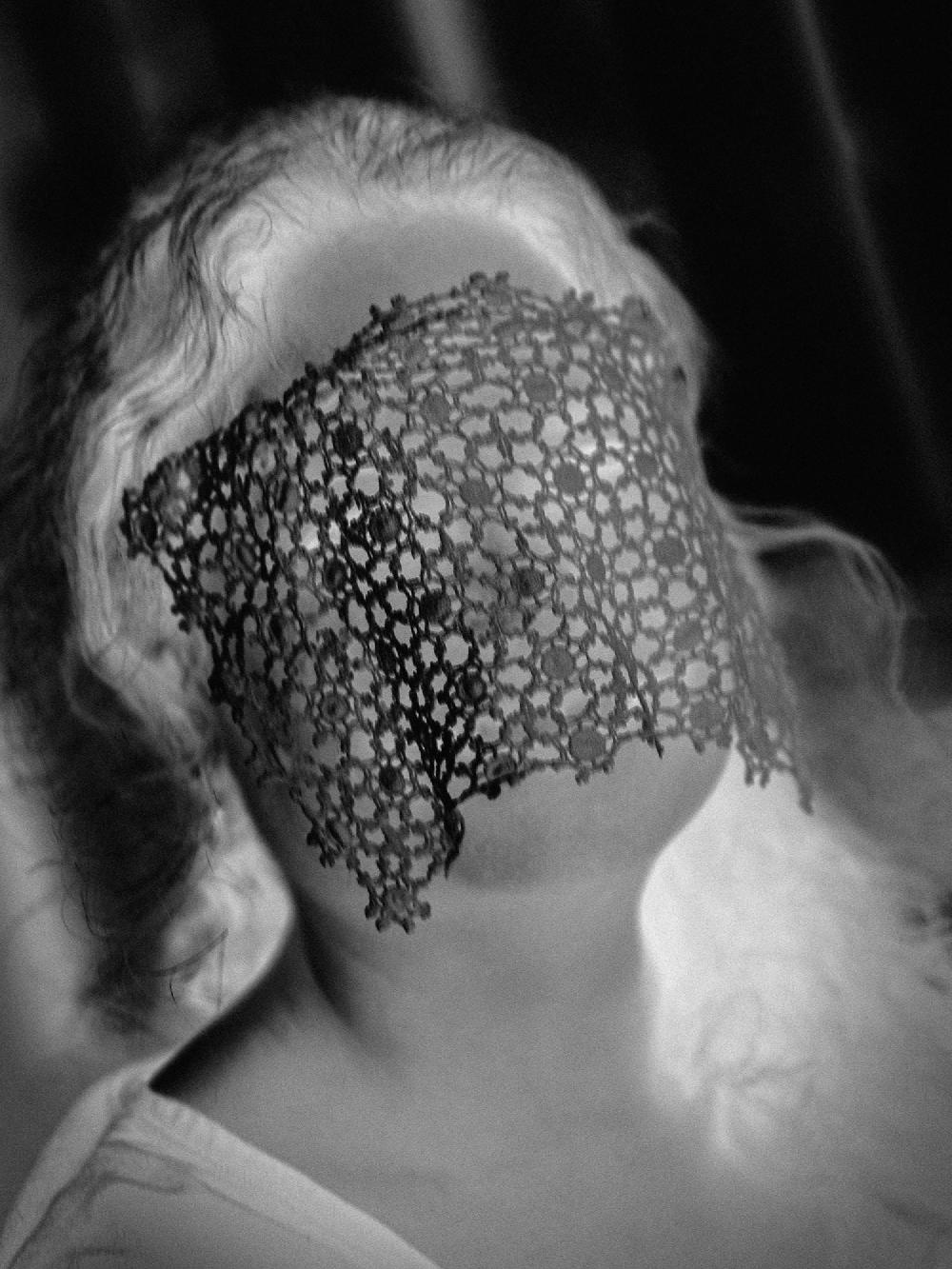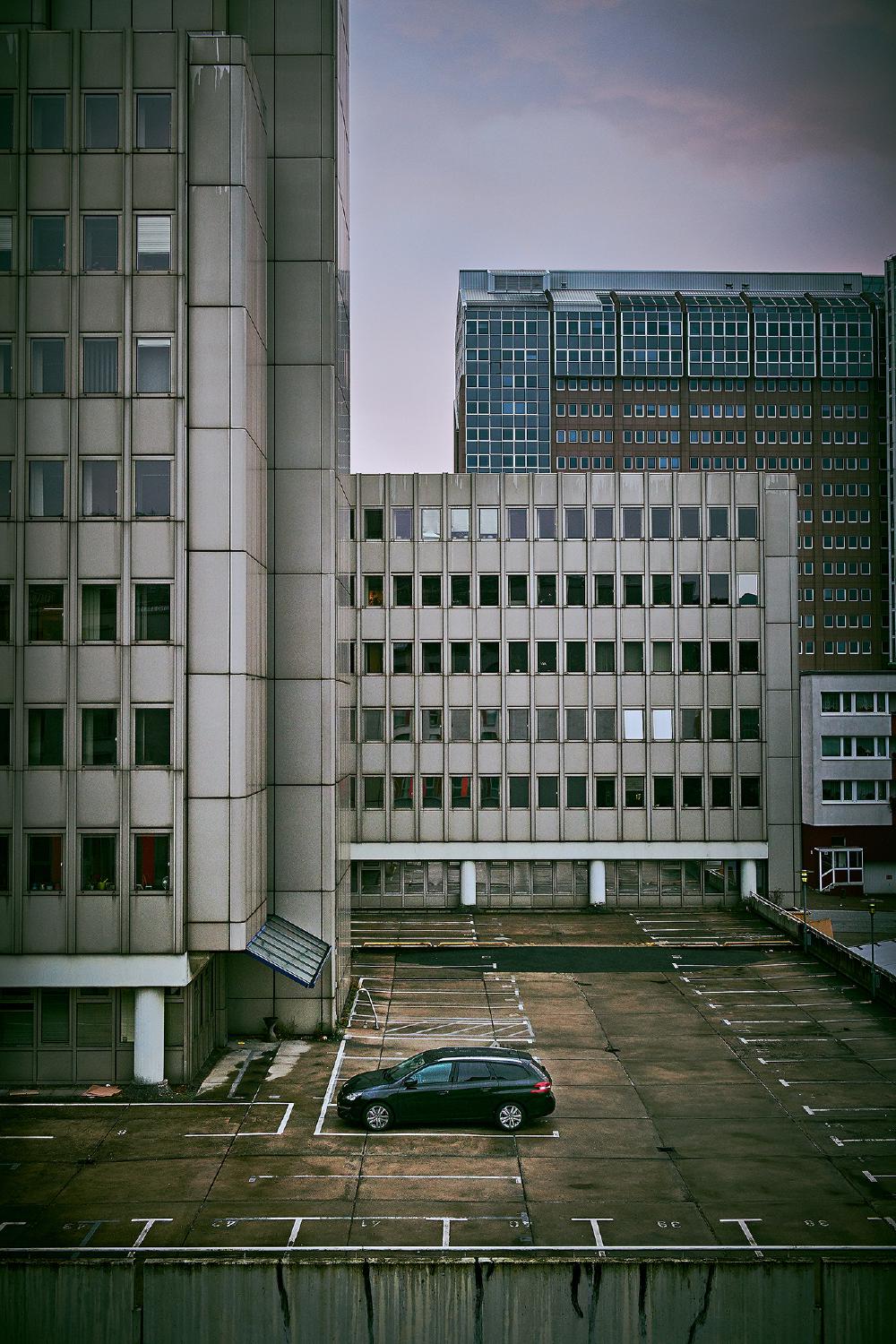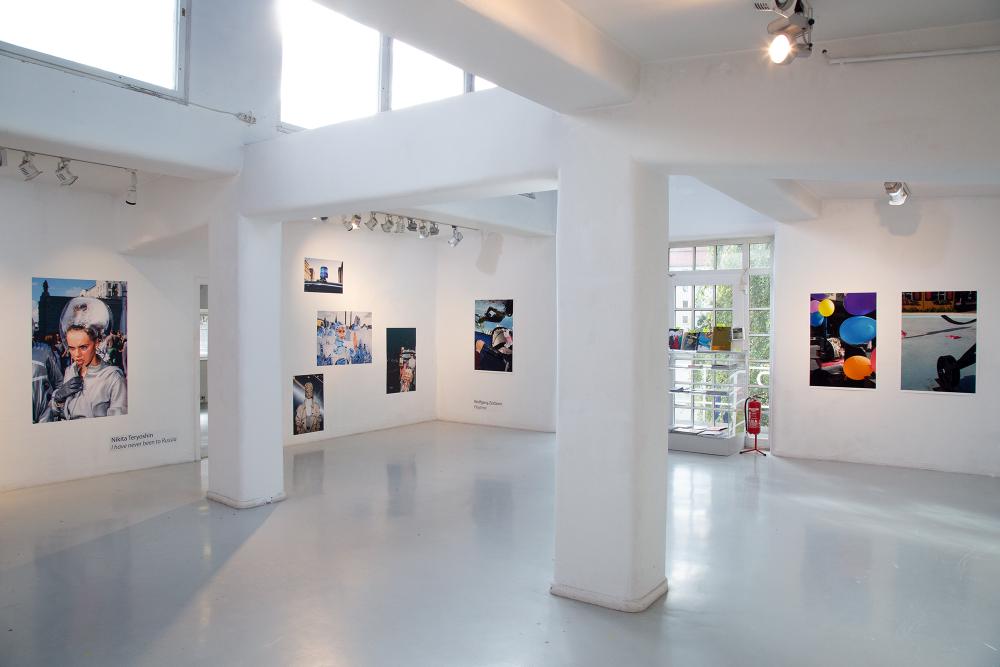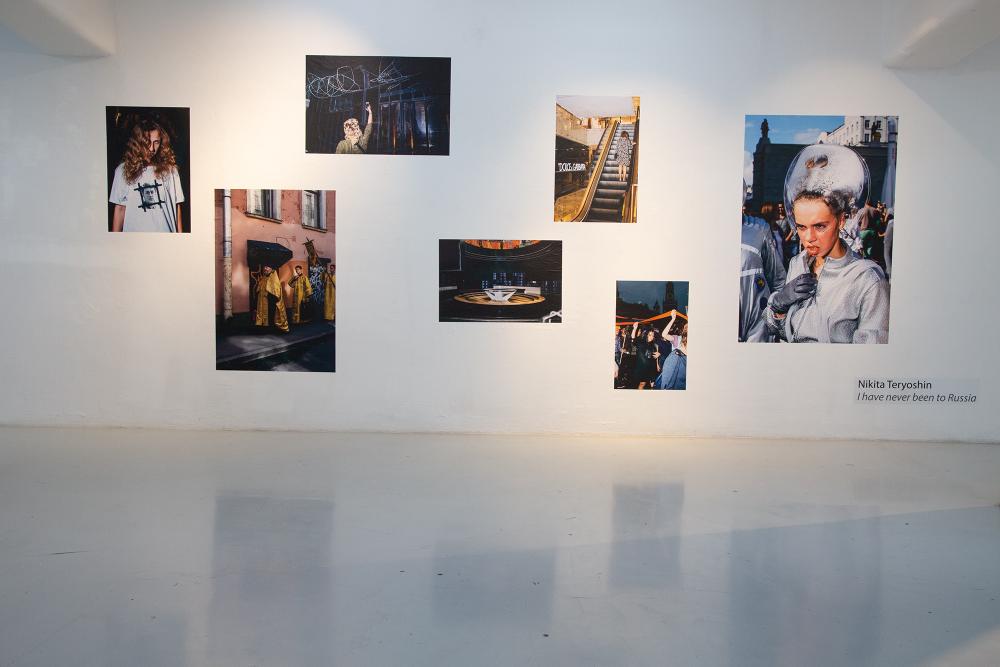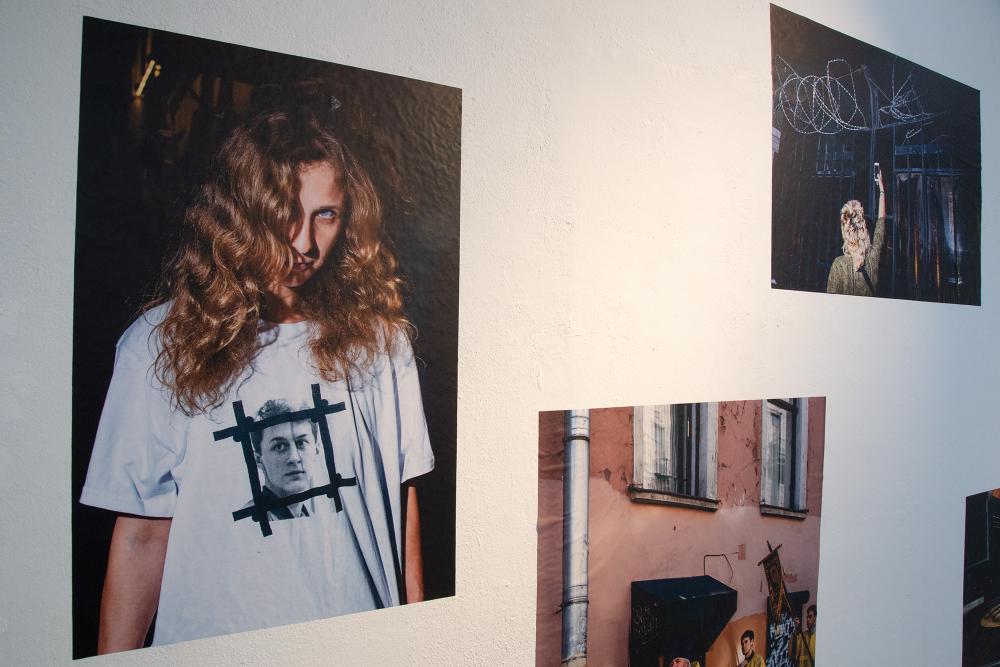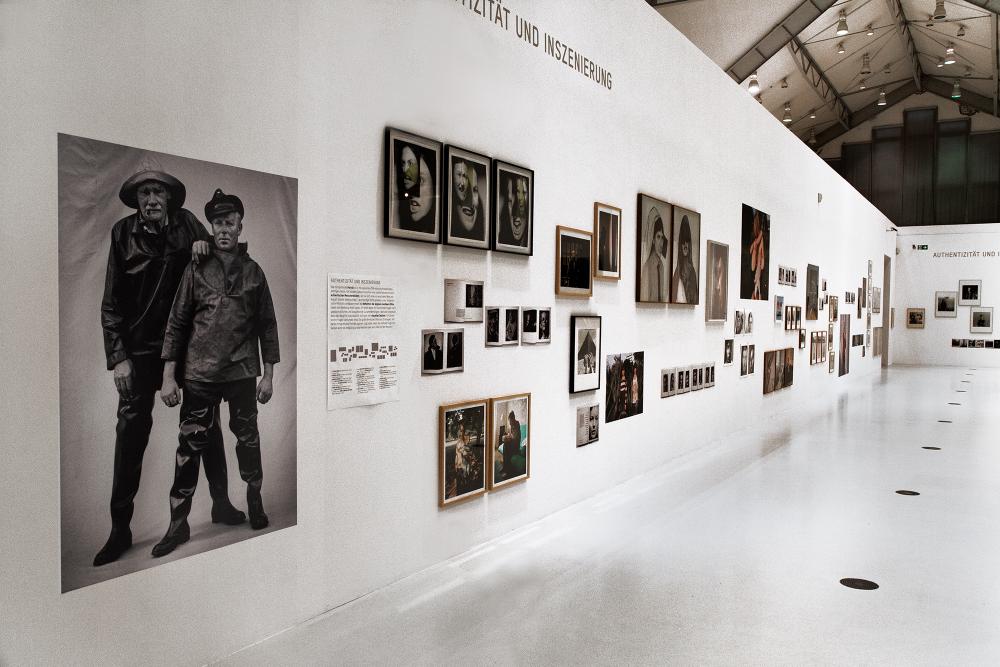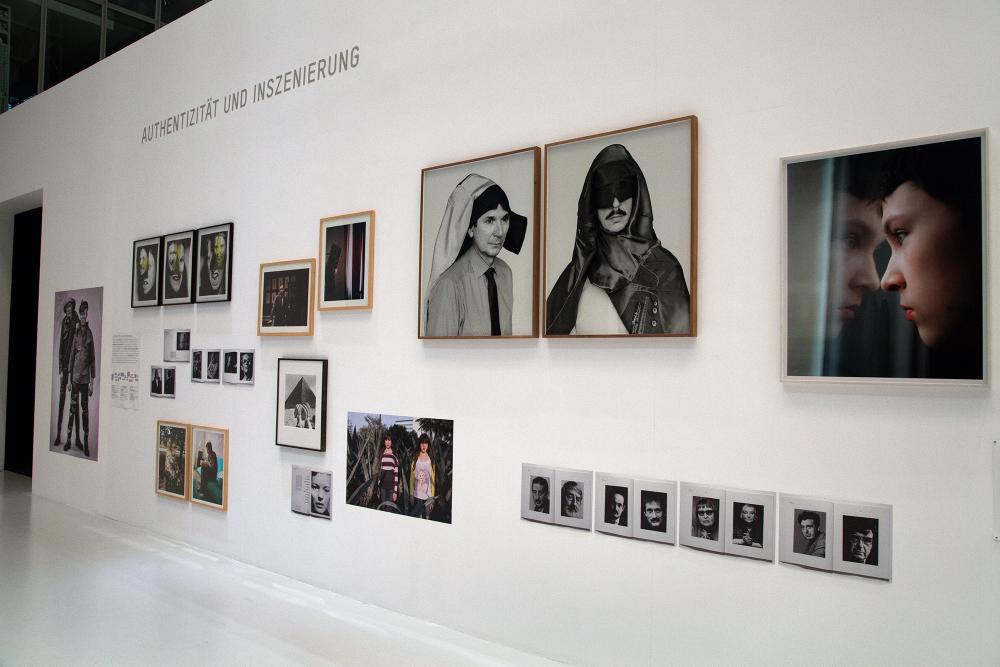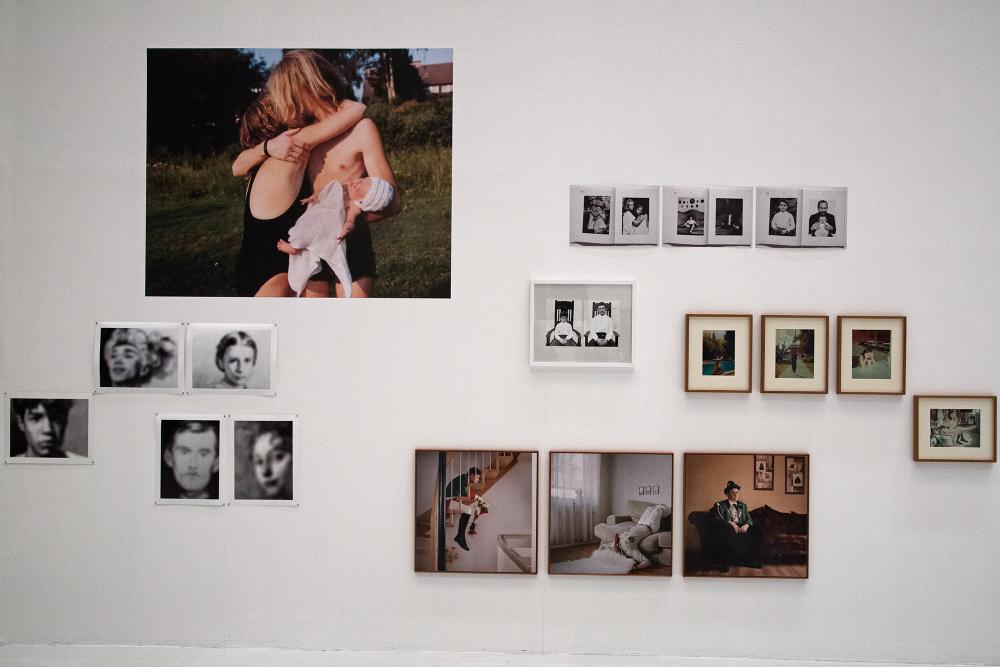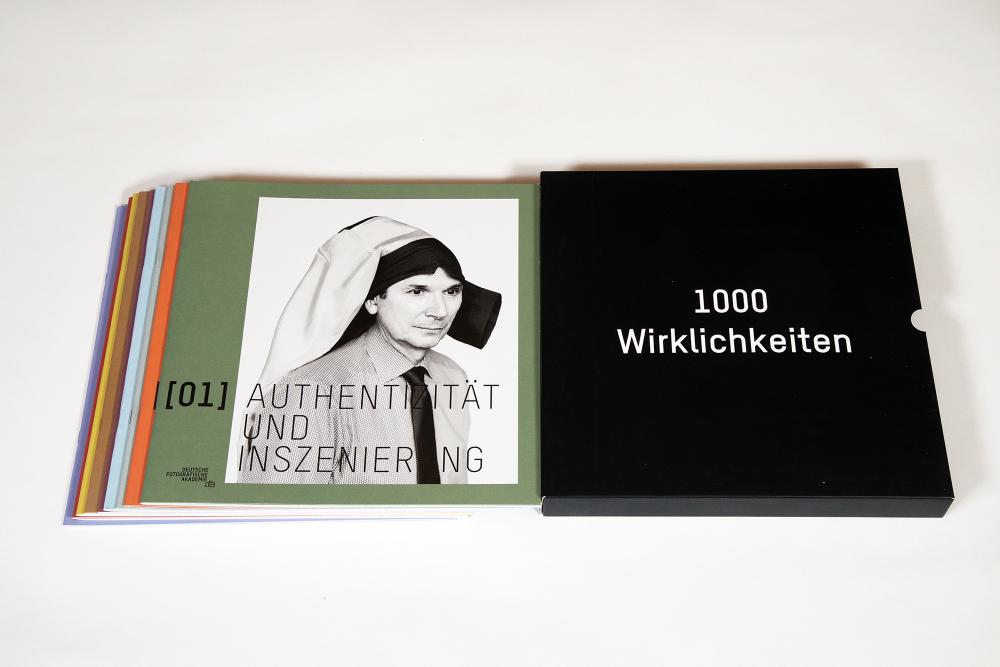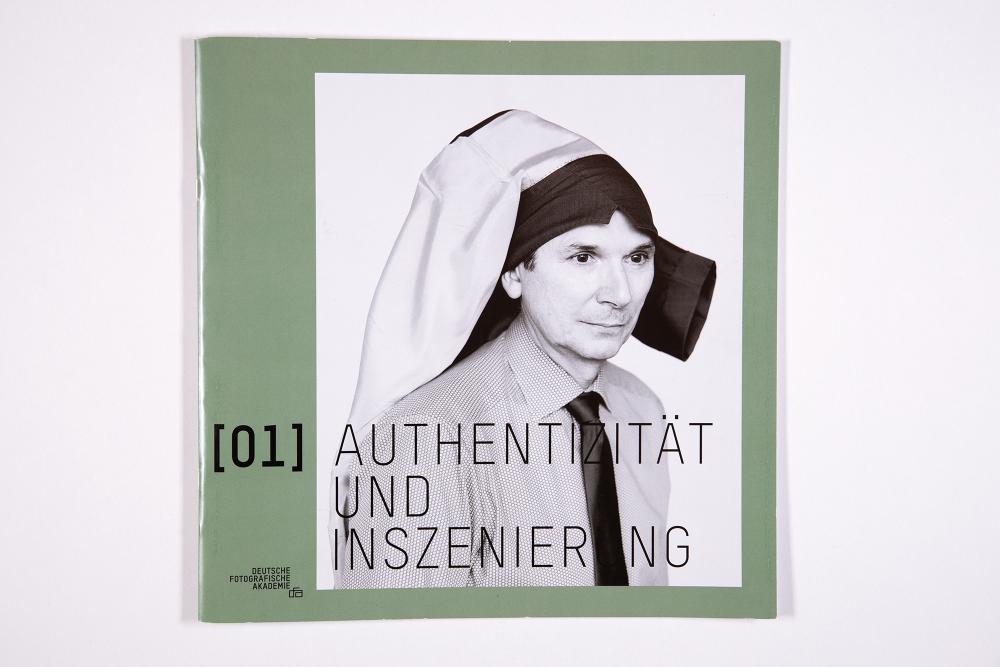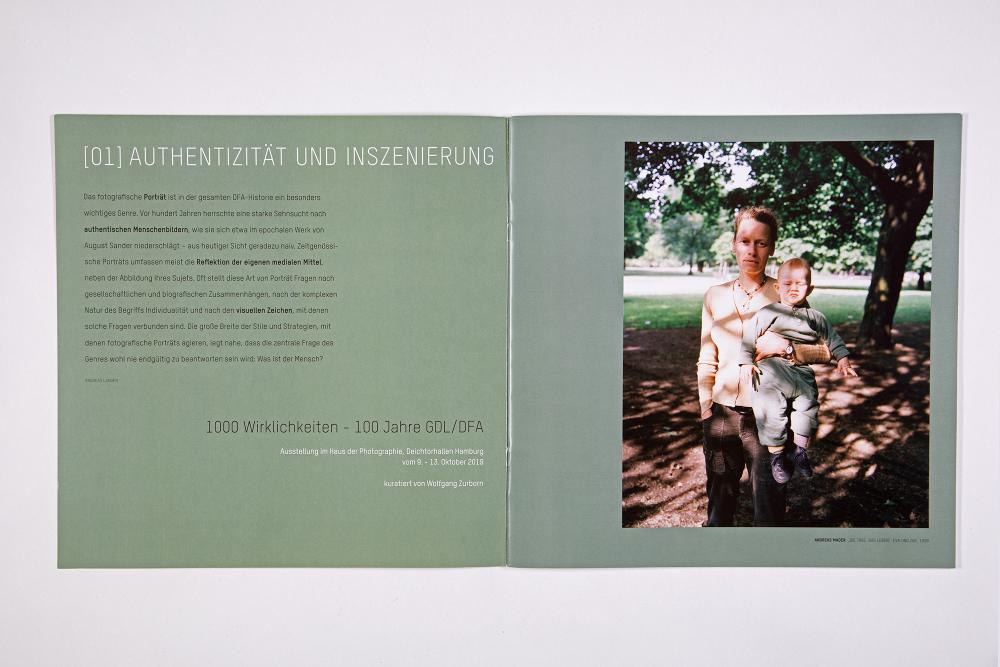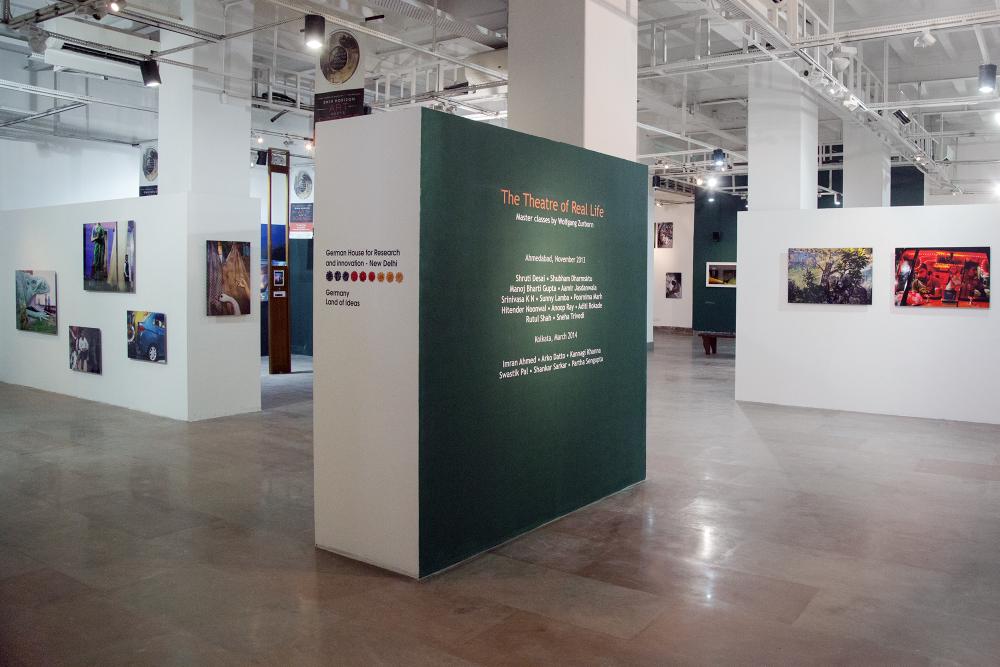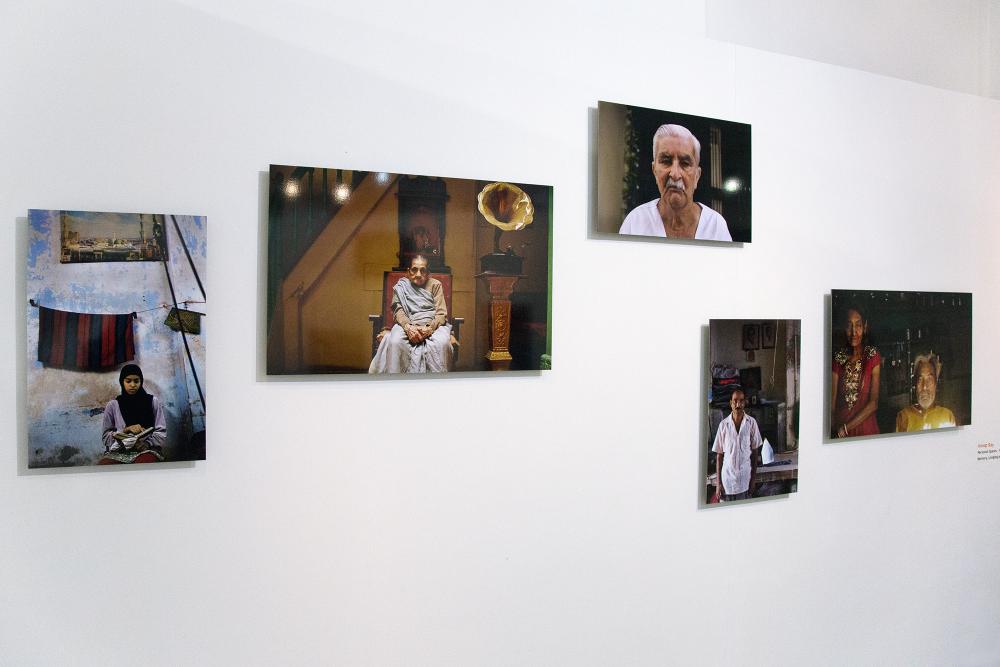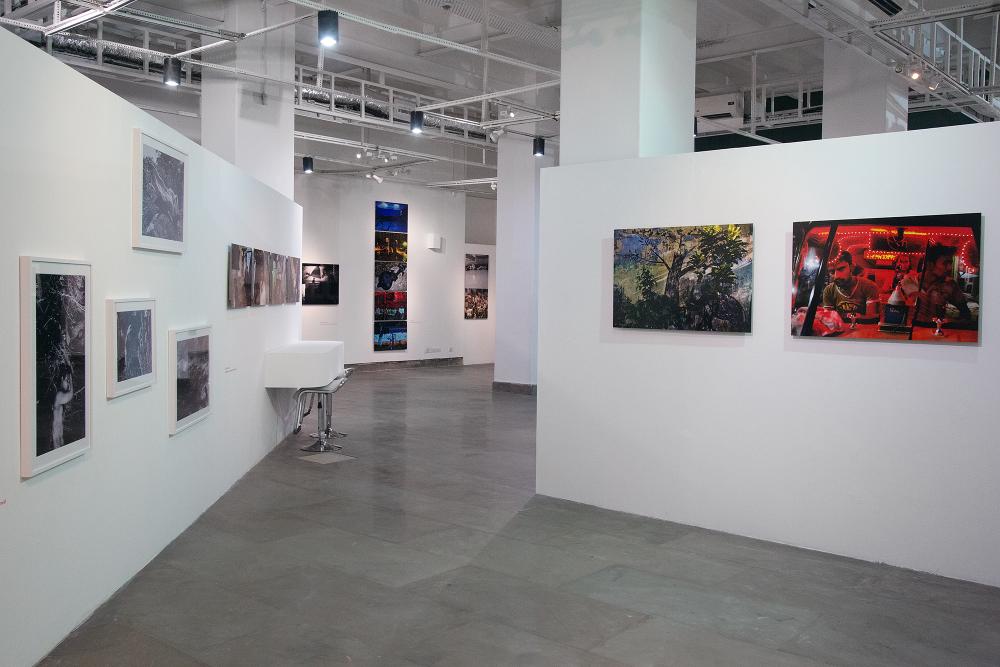Curation
RAW Photo Triennale Worpswede 2023
Annual topic “Turning Point. Turning World”
Social, political and societal reality is characterised by changes, crises and critical moments. Whether technological
innovations, ecological catastrophes, demographic upheavals or socio-cultural paradigm shifts - the world is at a
turning point. With the theme “Turning Point. Turning World”, the fourth edition of RAW aims to focus on this process of
radical change and to present artists whose works intensively engage with the social, political and ecological
narratives of our world. The selection will be made by an (inter)national team of curators. Under the four keywords
#RISK, #FAKE, #EGO and #NEXT, the central exhibitions of the RAW Photo Triennial on this year’s theme “Turning Point.
Turning World”, the central exhibitions of the RAW Photo Triennial offer a mixture of current documentary and artistic
photo and video works.
Exhibiton #FAKE
Worpsweder Kunsthalle
March 18 – June 11 2023
Curator: Wolfgang Zurborn
Participating artists: Weronika Gesicka (PL), Lori Nix & Kathleen Gerber (US), Karina-Sirkku Kurz (DE), Max Pinckers (BE) und Torsten Schumann (DE)
The search for truthfulness and the perfection of deception do not form an insurmountable opposition for the artistic positions of the exhibition #FAKE when dealing with the photographic medium. In times of media overload with fake news, the dividing line between fiction and reality is becoming increasingly blurred. Raising awareness of this is the intention of the works presented. With a broad spectrum of photographic approaches, collective values are questioned.
Weronika Gesicka
Traces are, by definition, marks or other indications of the existence or passing of something. Evidence of a presence. Confirmation of participation. Examples of such traces are photographs, which document the existence of people, situations, moments. They are like engrams that come about through certain stimuli and experiences. This project is based on vintage photographs purchased from an image bank—family scenes, vacation souvenirs, and everyday life suspended between truth and fiction. It is hard to figure out whether they are spontaneous or entirely staged. We know nothing of the actual ties between the individuals in the photographs; we can only guess at the truthfulness of their gestures and gazes. Who are, or were, these people in the photographs? Are they actors playing happy families, or real people whose photographs were put up for sale by the image bank? Some are present. Others vanish from the pictures, but always leave a trace.These images, modified in various ways, are wrapped in new context: our recollections of these people and situations are transformed and gradually blur into a new reality…
Weronika Gesicka, born in Włocławek (Poland). A visual artist focused on photography, who also creates objects and artefacts. She graduated from the Faculty of Graphic Arts at the Academy of Fine Arts in Warsaw. Her projects explore topics related to memory and the underlying mechanisms. She is also interested in the cultural phenomena that impact contemporary reality and can be exploited for manipulating it. Her art addresses issues linked to interpersonal relationships, growing up and family and social roles assumed by people. She eagerly works with archival materials. Her numerous awards include the Paszport “Polityki” Award for Visual Arts (2019), the EMOP Arendt Award (2019), and the Foam Talent Award (2017). Gęsicka’s works have been exhibited worldwide and can be found, inter alia, in the collections of Dom Museum Wien in Austria, the Arendt Collection, Luxemburg, the MuFo Museum of Photography in Krakow, Poland, National Museum in Wroclaw, Poland, and the Deutsche Börse Photography Foundation, Germany.
Karina-Sirkku Kurz
The photographic work SUPERNATURE centres on the concept of the body as a malleable, sculptural object. In this manner, aesthetic plastic surgery serves as an important context - a highly invasive practice, which revolves around designing and restructuring one‘s physical appearance according to specific visual ideals. How does reshaping the appearance of the body affect one‘s self-image? Additionally, how are these corporal interventions experienced - which indelibly alter internal tissue, membrane, and flesh? In my approach, I elicit concepts from the book Our Strange Body (2014) by dutch philosopher Jenny Slatman.
At the intersection of medicine and humanities Slatman argues that “… what we call our own body entails a strange dimension. Precisely because of this element of strangeness in our own body, we are capable of incorporating strangeness and adjusting to radical physical changes.” Carefully considered printing methods and a respective type of presentation emphasise the physicality and the materiality of the works.
Karina-Sirkku Kurz studied in Bremen, Lahti and Helsinki, where she graduated with a master’s degree in photography from Aalto University, School of Arts, Design and Architecture. Since 2013 she has been working as a freelance artist with the medium of photography. In addition to documenting or abstracting found subjects, she creates three-dimensional objects and then transforms them into a photograph. Her work is shown nationally and internationally in exhibitions and festivals, published in books and art magazines, represented in collections and supported by grants and awarded prizes, i.e. the Nordic Dummy Award and the Finnish Photobook Of The Year.
Max Pinckers
For Margins of Excess, Max Pinckers and Victoria Gonzalez-Figueras (CA, 1988) travelled across the United States during the 2016 presidential election. They spent months researching stories in which people experience a “trial by media.” The six protagonists of Margins of Excess were each at the centre of a media frenzy in which they were accused of falsehoods and deceptions because they attempted to realise a personal dream or vision. Fiction and imagination seem to form a fundamental part of their reality. For Pinckers this is a reflection of the relationship between documentary photography and the realities it attempts to represent. He lets his subjects speak for themselves and combines their testimonies with images created using his own imagination. Margins of Excess questions what we are able or willing to accept as truth in a world of “alternative facts,” “fake news” and “post-truth.” It proposes a freer, more subjective approach to traditional notions of documentary.
Max Pinckers (˚Brussels, 1988) grew up in Indonesia, India, Australia and Singapore. In 2007 he returned to his native country Belgium to study photography at the School of Arts in Ghent, where he attained a BA, MA and PhD in the arts in 2021. His work explores the critical, technological, and ideological structures that surround the production and consumption of documentary images. For Pinckers, documentary involves more than the representation of an external reality: it’s a speculative process that approaches reality and truth as plural, malleable notions open to articulation in different ways. He is represented by Gallery Sofie Van de Velde in Antwerp and Tristan Lund in London.
Torsten Schumann
For Torsten Schumann, urban spaces are places full of mystery and confusion. With a subtle sense of humor, he uses unusual perspectives to put in the everyday life found objects and sceneries into the picture in a way that gives a very vivid expression to the paradoxes and absurdities of contemporary life. This is particularly evident in his current series Vermillion Confusion, created in China between 2020 and 2022.
His fragmentary views of urban life are condensed into highly complex image montages in pairs of images that are joined together end to end, in which one can lose one’s orientation as to what is actually still real and what is already fake. It is precisely by dissolving this boundary between appearance and reality that Schumann creates a photographic imagery that evokes a healthy skepticism about an unambiguous truth content in photography and, at the same time, is borne by an empathetic curiosity for the particular in the unspectacular and the everyday. For him, this applies beyond all political, cultural and ideological boundaries to all the places of this world in which he currently lives.
Torsten Schumann is a German photographer living in China since 2020. His work has been exhibited internationally, including at the Context Gallery of the Filter Photo Festival Chicago, the Center for Fine Art Photography, Fort Collins; Soiz Gallery Passau; Galerie Sehnsucht Rotterdam and Jarvis Dooney Gallery Berlin. They have also been featured in festivals such as Circulation(s) Paris, HeadOn Sydney and Kaunas Photofestival. Schumann has received several awards for his photographic work, including the Arte Laguna Prize, the PDN Photo Annual Award and the OPUS Magazine Photo Prize. In 2016 his book More Cars, Clothes and Cabbages was published by Peperoni Books. The Musée de l’Elysée in Lausanne and the JPMorgan Chase Art Collection New York have works by Schumann in their art collections.
Lori Nix und Kathleen Gerber
Several common themes prevail throughout the work of Lori Nix and Kathleen Gerber: the constructed photograph, the landscape in turmoil, and danger married to humor. The photographs they create do not reflect the tradition of the grand idyllic landscape. rather than showing the beautiful or heroic vista, they look to the darker corners of life. They are interested in the forces of entropy, in the ruins left in the wake of human portence of grandeur. Their scenes are usually devoid of people. In this way, what remains shows civilization absent of humans. Evidence of humans may still be visible, but the cause for their absence is left unclear, allowing the viewer to complete the narrative. In the series „The City“, they focus on the ruins of urban landscapes. They have chosen the spaces that celebrate modern culture, knowledge, and innovation. Here the monuments of civilization and material culture are abandoned, in a state of decay and ruin, with natural elements such as plants, insects, and animals beginning to re-populate the spaces. This idea of paradise lost, or the natural world reclaiming itself, becomes more forceful as we face greater environmental challenges in the world around us.
Lori Nix and Kathleen Gerber have been making art collaboratively for over twenty-three years. Based in Cleveland, Ohio, they construct meticulously detailed model environments and photograph the results. They consider themselves faux landscape photographers. Through the photographic process the fictional scene is transformed into a surreal space, where scale, perspective, and the document of the photograph create a tension between the material reality of the scene and the impossibility of the depicted narrative. In this space, between evidence and plot, the imagination of the viewer is unlocked, engaged, and provoked. They want their scenes to convey rich, complex, detailed, and, ultimately, open-ended narratives.
Layers of the Real
Exhibition at Kunsthaus sans titre, Potsdam
September 25 - October 30, 2022
With works by:
Elena Helfrecht • Karina-Sirkku Kurz • Gisoo Kim • Axel Beyer • Wolfgang Zurborn
Curated by Wolfgang Zurborn
It is a happy moment when inner images and outer reality come together in subjective perceptions of life worlds. The medium of photography can then, beyond the belief in an unambiguous interpretation of reality, penetrate ever deeper into the complex stratifications of the visible. The artistic attitude here is not to be hastily satisfied with the simple image of the world, but to develop visual meta-levels with experimental and conceptual methods. In these, a power of imagination emerges, which the viewers can fill with their own experiences and fantasies.
With their photographic works, the artists Elena Helfrecht, Karina-Sirkku Kurz, Gisoo Kim, Axel Beyer and Wolfgang Zurborn question their own identity with all the imprints they have received through family, social, cultural and political influences. Their works usually move on the interface between real and surreal and, with their unusual visual worlds, enable a view of our present beyond conventional patterns of thought and perception.
In her work Plexus (2018-present), for example, Elena Helfrecht investigates the influence of the family on psychological and cultural processes within a history spanning four generations. In the process, documentary and staged images merge into a kind of allegorical theater piece in which her family mansion in Bavaria becomes a stage on which everyday objects transform into mysterious actors of the present and the past. In the style of magical realism, precise insights into a private cosmos are given and at the same time an allegorical narrative full of symbols and associations is created, which in its visual condensation removes what is depicted from its concrete context.
In the multi-part photographic work Supernature (2015 - 2019) by Karina-Sirkku Kurz, the human body is the central motif. She understands her images as a visual wonder about things, about the world, and about what people do. Thus, aesthetic plastic surgery comes into her field of vision, which understands the body as a malleable, sculptural object. Using a conceptual approach, she combines exhibits of varying sizes in the installation of her work, produced with selected printing and exposure processes. Beyond a linear narrative with moralizing valuation, formally compressed views of body parts and medical objects coalesce into a narrative that instead raises questions about people’s self-image.
Gisoo Kim takes her approach to her photographic images a step further by adding further visual layers to concrete views of the world through embroidery, cutting, and collage. In the layering and interaction of various materials and imagery with varying formal abstraction, the artist creates a variety of new realities. Nature, sustainability, and the coexistence of people form the fundamental themes for her, and thus photographs of people in landscapes often provide the source material for her mixed media works. In the further artistic process, the experimental reworking removes what is depicted from real contexts and thereby develops a poetic power of the images that makes a new view of the seemingly familiar possible.
The visual montage is also for Axel Beyer the appropriate technique to explore a concrete place on the one hand precisely photographically and on the other hand to formulate a very pointed personal view on absurdities of the everyday. He found this in the small Hessian town of Bebra, which he visited frequently for family reasons, and in the process became interested in a documentary approach. However, it quickly became clear to him that a soberly factual presentation would not convey what is special for him about this place in the province. Under the title Bebra Curiosa, he then created photomontages that, with a visual interweaving of interiors and exteriors, grotesque shifts in scale, and absurd interplay of everyday objects, take a humorously ironic look at what is otherwise overlooked.
In the series Play Time (2015-2019) by Wolfgang Zurborn, the photographs also often seem like collages, but they show real seen moments of urban life on different occasions and in different places. With unusual perspectives, viewers are taken into a very idiosyncratic, whimsical world of images, in which scenes and objects of everyday life seem to be out of kilter. Contemporary man finds himself in a Play Time in which the boundaries between fiction and reality are blurred. The feeling of security in a familiar living space increasingly detaches itself from a concrete place to a world full of artificially created myths.
Listen to the Photographs
A celebration of photography with a large group exhibition, artist talks, guided tours, Instagram take overs, video meetings and a party. From 22 September to 19 October 2021, contemporary photographic projects from an entire decade will be presented and brought to life in a vital dialogue in the Pop-Up Room Hamburg.
Opening: Fr. Sep 24 2021, 19 p.m.
Introduction: Wolfgang Zurborn, “Listen to the Photographs”
Duration: 25. September bis 17. Oktober 2021
Location: Pop-Up-Raum Hamburg, Grindelallee 129
The Team
Organisation: Monika Barth
Art Director: Lena Matrosova
Curator: Wolfgang Zurborn
Jackie Baier • Monika Barth • K.T. Blumberg • Eva Brunner • Marina d’Oro • Sonja Düring • Janick Entremont • Uta Genilke • Monika Hager • Dieter Hanke • Gabriele Harhoff • Christine Herold • Peter Hilden • Hengame Hosseini • Anne Jenter • Tobias Keppler • Steffen Knop • Lena Matrosova • Uwe Nölke • Torsten Schumann • Cina F. Sommerfeld • Elke Sonntag • Ruth Stoltenberg • Corinna Streitz • Barbara Thieme • Irina Tübbecke, Rosemarie Zens • Wolfgang Zurborn
Floating Identities
Exhibition at Kunsthaus sans titre, Potsdam
Curated by Wolfgang Zurborn
October 4-31, 2020
KT Blumberg Pommes in Paradise, Andreas Herzau Helvetica, Nikita Teryoshin I’ve never been to Russia, Andrea Wilmsen Fragile Realities und Wolfgang Zurborn Play Time
To what extent is it still possible for the individual in the digital media age with his flood of images that permanently influence our thinking and feeling to perceive the public space in a personal way? The 5 photographers of the exhibition “Floating Identities” deal with this question in a balancing act between the freedom of associative observation and the undeniable reference to social reality. The stylistic range extends from ironically broken documentary approaches to a radically subjective perspective, in which only remnants of the authentic are recognizable. Ultimately, it is about capturing everyday experiences in different nations and social constellations in their living complexity and their rapidly accelerating change. The coherence of the world is dissolving more and more and finding identity is becoming a floating state without grounding for modern people.
With her series Pommes in Paradise, photographer KT Blumberg takes us to tropical wellness oases. The longing for a world beyond the stress of everyday life makes people forget that they are in a completely artificially constructed place, where the beach idyll was designed on the drawing board and any naturalness is an unattainable illusion.
The captured sceneries between myth and reality, however, are captured with such a humorous lightness that space is created for a close look without a clear evaluation.
For Wolfgang Zurborn, the imagery of a leisure and media culture disseminated by film, television, the Internet, and advertising on monitors, screens, cell phone displays, in magazines, on billboards, and on building facades is so omnipresent that it can no longer be seen separately from real life. In his multilayered photographs, people appear in a Play Time in which the boundaries between fiction and reality become blurred.
Andrea Wilmsen’s Fragile Realities were shot in Lisbon and yet in no way represent a documentation of this geographically limited urban space. Her focus is rather on inner images that capture the fleetingness of the city’s permanently changing dynamics in dialogue with the external living environment. Fragmentary views detach themselves from a concrete representation of the place and come together to form a construction of reality that stimulates the viewer’s imagination.
Andreas Herzau, on the other hand, directs his gaze very specifically at the self-image of a nation. His book and exhibition project Helvetica represents a photographic examination of Switzerland. It is the fractures in the outwardly so smooth image of this country that the photographer stages with surprisingly contrasting cuts in the sequence of images. With his radically subjective perspectives, he transcends the boundaries of classic photojournalism.
In his long-term project I’ve Never Been to Russia, Nikita Teryoshin searches for traces in a country he left 20 years ago. His perception is not clouded by nostalgia. With a hard flash he shines through the government’s stagings with all their ceremonies, marches and parades. For him, Moscow and St. Petersburg develop into Potemkin villages in which the individuals seem lost among manifold mirages. He does not locate the intense search for his own identity in the past. As a traveler between worlds, he sees it rather in the permanent confrontation with the present.
1000 Wirklichkeiten - 100 Jahre GDL/DFA
“With works by more than 150 photographers, the exhibition “1000 Realities” showed the great diversity of artistic photography in Germany over the last 100 years, and the title makes it clear that the DFA has an open eye for the most diverse artistic strategies of this medium. Wolfgang Zurborn curated it in such a way that visions for the future were directly juxtaposed with historical photographic positions." (Source: https://dfa.photography/post/dfa-jubilaums-publikation-1000-wirklichkeiten-100-jahre-gdldfa)"
Participating artists of the exhibition „1000 Wirklichkeiten - 100 Jahre GDL/DFA“
Publication
The publication “1000 Realities - 100 Years of GDL/DFA” is based on the exhibition of the same name at the Haus der Photography, Deichtorhallen Hamburg, in autumn 2019. It consists of 10 large-format catalogues of 30x30cm each, combined in a slipcase.It is available at book@dfa.photography.
With reference to the exhibition, the publication also aims to raise awareness of the various forms of
expression of the medium of photography.
It moves between authenticity and staging, image and abstraction, document and fiction, intuition and concept.
Photographs of the exhibition’s installation walls alternate with individually highlighted
photographs and short, concise quotations by the photographers. A visual interplay that conveys the
the idea of the exhibition in its unique thematic diversity.
A separate issue is dedicated to the history of the DFA, which was presented by Corinna Weidner and Wolfram Janzer in a
separate exhibition area. Numerous excerpts from the archives of written documents and pictures illustrate this historically
significant holdings.
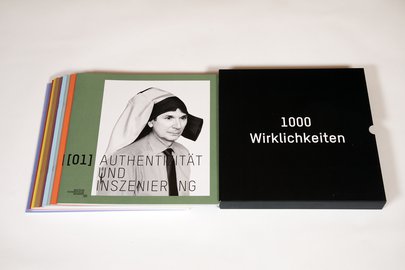
The set of 10 is rounded off with a booklet about the varied conference programme during the exhibition week, including pictures of the making-of. It also includes the presentation of the winners of the 2019 David Octavius Hill Medal Ute Mahler and Werner Mahler with a laudatory speech by Ingo Taubhorn, curator of the House of Photography, Deichtorhallen Hamburg.
Info about the publication:
10 catalogues à 30x30cm in a slipcase
#01 Authenticity and staging
#02 Passion and chance
#03 Science and poetry
#04 Logic and Invention
#05 Fantasy and laboratory
#06 Structure and Individuality
#07 Distance and Interference
#08 Message and Statement
#09 History of the GDL/DFA
#10 Celebration and Making-Of
Photographs and texts by DFA members
Design: Ruth Stoltenberg, Wolfgang Zurborn
Price: 68,- Euro (for DFA members: 34,- Euro)
ISBN: 978-3-949672-00-2
India Vision Quest
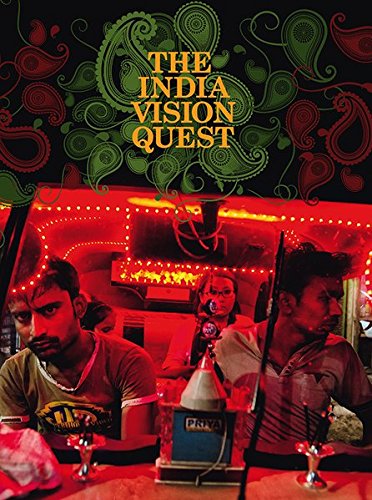
The photographs were taken in master classes by Wolfgang Zurborn at the NID in Gandhinagar (Nov. 2013) and Kolkata (March 2014). Exhibitions of the work were held in the Indian cities of New Delhi, Pondicherry, Kolkata, Ahmedabad and Bengalore. In addition, they were also shown in 2015 at Galerie Lichtblick, Cologne and in 2016 at the festival Kolga Tbilisi Photo in Georgia.
The workshops were organized by DWIH, German House for Research and Innovation New Delhi. Special thanks to Annette Doll-Sellen and Alexander P. Hansen.
Thanks also to Manik Katyal, Rishi Singhal and Suvendu Chatterjee for nominating the participants of the workshops.
